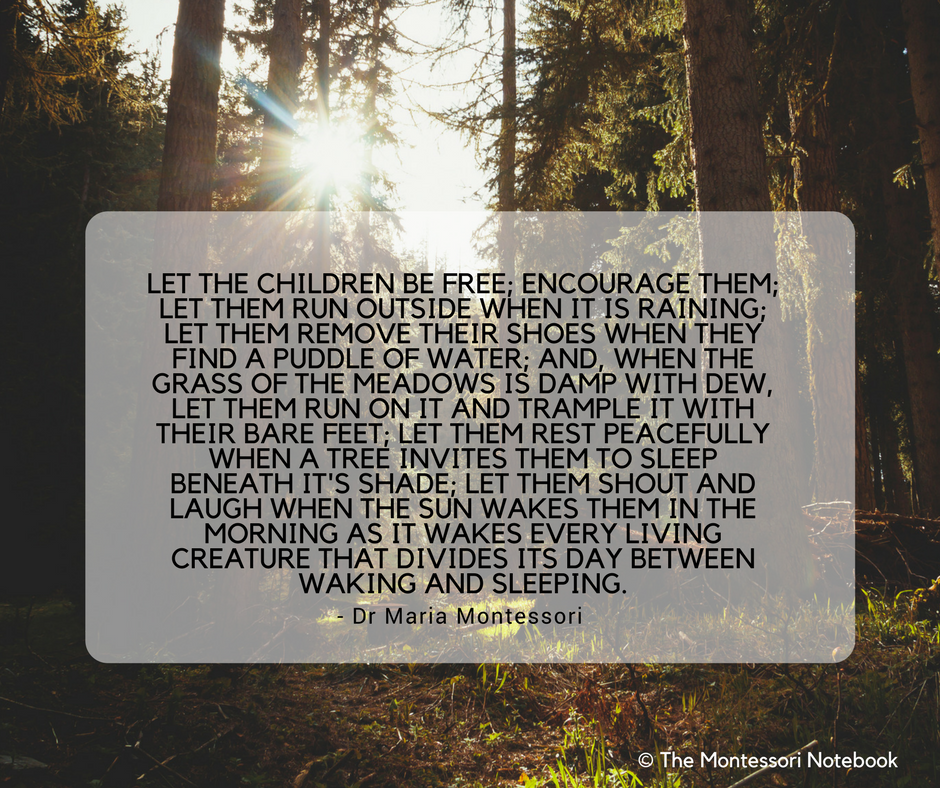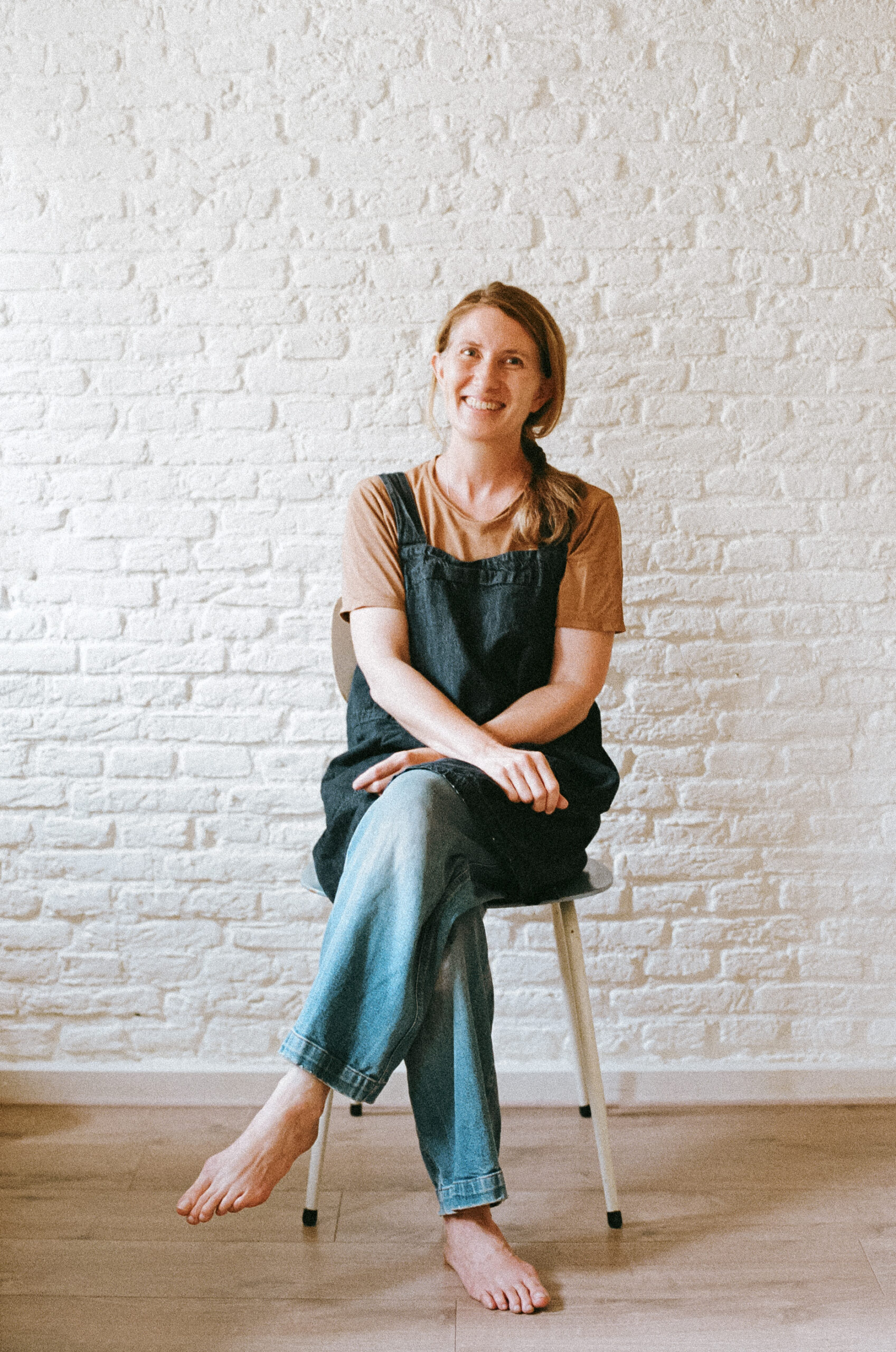10 tips for Montessori activities outdoors and in nature
I love how Dr Montessori, even in the early 1900’s, had such a holistic idea of children and their development, including the importance of the outdoors and nature.

Young children are sensorial learners. This quote from Dr Montessori above embodies how rich their experiences can be. Even as an adult, the memories of walking barefoot in grass from my own childhood are still so strong.
Nature has the ability to calm us, to connect us with beauty, and to reconnect us to the earth and environment.
Here are 10 tips to include some Montessori activities outdoors and in nature with your children:
- Seasonal activities – depending on the season you could take a basket to the local park or a nearby forest to collect leaves, acorns, shells, sticks, rocks, stones, and pine cones.
- Grow your own vegetables – you don’t even have to have a large garden to grow your own. You can set up a potting station with some soil, a scoop and some seeds. Have a watering can at the ready. Don’t forget about composting by adding your food waste to a compost bin or worm farm. Your children will learn in a very natural way about the food cycle and returning nutrients to the soil.
- Movement opportunities – climb trees, balance along walls or tree stumps or logs, hang from branches, swing from a tyre, ride a balance bike (“loopfiets” as they say in Dutch), kick a ball, jump with a skipping rope, chase each other, run fast, and walk slow.
- All weather exploration – there is no such thing as bad weather, just bad clothing. So get some great all-weather clothing and shoes and stomp in those puddles, make a snow man, put on a hat and sunscreen and explore the beach, get out each and every day.
- Notice the beauty of the outdoors together – watch insects at work, droplets on leaves, the smell of rain, the colours of the sunset, the vistas from the mountains, the stillness of the lake or the ripples, the movement of the ocean, the wind in the trees, grab a magnifying glass to explore close up, or simply take in the gloriousness of the flowers and bees in a neighbour’s garden.
- Find moments of quiet – find a place to sit and watch the clouds, to sit in silence, or just to breathe.
- Make treasure hunts – make a list of pictures and work together to find all the items on your list. It could be in your garden, at the park, in the forest, or any outdoor place you have access to.
- Build your own hut, cubby house, obstacle course and invite around some friends.
- Make outdoor art – use mud, water, leaves, flowers, soil, seeds, grass and whatever other interesting pieces you can find. Lay them into patterns, make them into shapes, or work together to make a face or an animal.
- Make a musical wall – hang in the garden old pots and pans, bells, and any other objects that make some sound when banged. Find some sticks to make some music.
Bonus: Anything to do with water – spraying the windows, filling a bucket and painting bricks with a brush, running through a sprinkler, making rivers with sand and water, or using a water pump at the playground.
For me living in the city, I find I almost need to get out out of the city and into nature at least once every few months. Sometimes it is just for an afternoon and I catch the train to the seaside with my children, take our coats, and go for a bracing walk along the coast. Other times we rent a beach hut, a caravan or a yurt and spend a few nights away. It’s so restorative for the whole family.
So I’m curious. What do you prefer? The sea? The forest? The mountains? I’d love to hear. I find it so hard to choose but I must say I loved the Black Forest in Germany where we visited last year with its mix of mountains, forest and lakes. Such a treat.

Simone Davies has more than 20 years’ experience as an AMI Montessori educator. Simone is the author of “The Montessori Toddler” and co-author of “The Montessori Baby” and “The Montessori Child” books, comprehensive guides to raising children in a Montessori way. She currently runs parent-child Montessori classes in Amsterdam at her school Jacaranda Tree Montessori. She also has a popular blog, instagram and podcast “The Montessori Notebook” and is mother to two young adults.